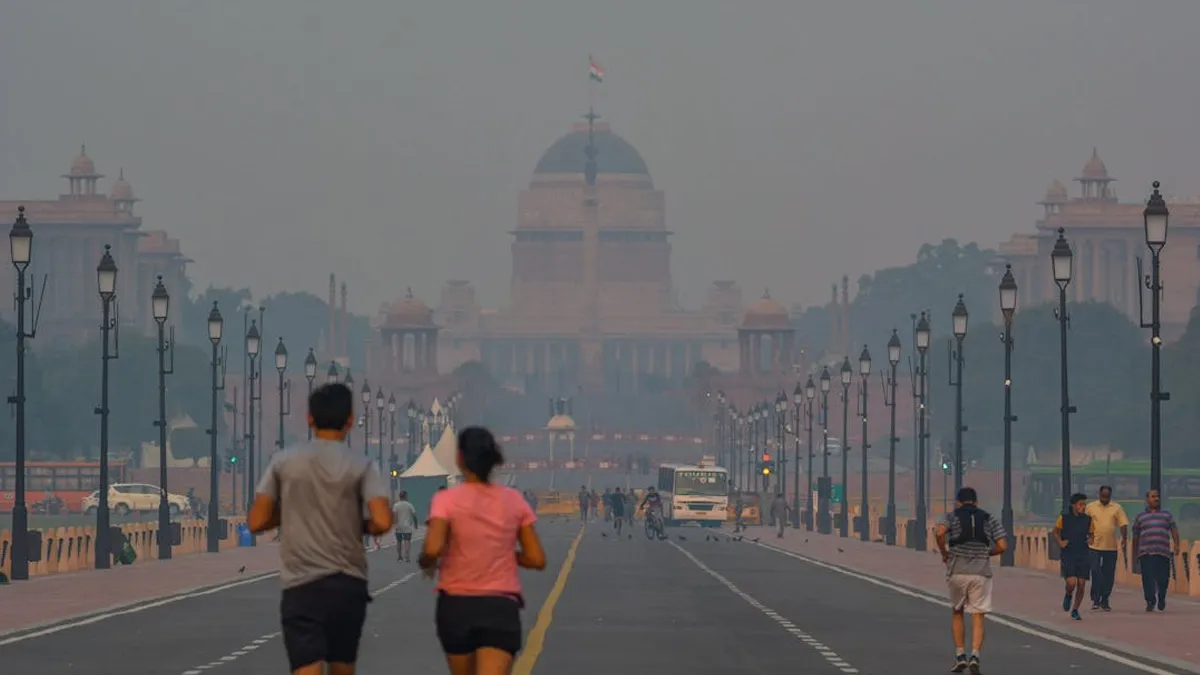
Delhi and its surrounding areas often face severe air pollution, especially during winter when toxic smog blankets the city. As per recent reports, Delhi’s Air Quality Index (AQI) remains in the 'severe' category, frequently crossing 200 and sometimes reaching hazardous levels above 300. This high pollution is mainly caused by factors like crop stubble burning, vehicle emissions, construction dust, and industrial pollutants. Such pollution levels raise concerns about outdoor activities like running, which involve heavy breathing and increased pollutant intake.
Table of Content:-
We spoke with Dr Pavan Yadav, Lead Consultant in Interventional Pulmonology & Lung Transplantation at Aster RV Hospital, Bangalore, to understand the health risks involved in running outdoors during poor air quality days.
Health Risks of Running Outdoors in High AQI![]()
Dr Yadav explains, “Running in polluted air can harm your lungs and heart. The tiny pollutants like PM2.5, PM10, ozone, and nitrogen dioxide irritate the lungs. Breathing harder during exercise means these pollutants reach deeper into the lungs, causing inflammation, bronchitis, asthma attacks, and long-term damage. Some pollutants enter the bloodstream, increasing risks of heart attacks or strokes, especially in people with heart or lung diseases.”
Key points:
- Running increases both the rate and depth of breath, so you pull in more air and if that air is polluted, you pull in more pollutants.
- Pollutants like PM2.5, ozone and nitrogen dioxide are especially harmful during exercise because they penetrate deeper and interfere with lung and heart function.
- Even for healthy individuals, repeated exposure during outdoor workouts in bad air can reduce endurance, trigger symptoms (cough, chest tightness) and raise cardiovascular risk.
- So what this really means: just because you can run doesn’t always mean you should run especially outdoors in heavily polluted air.
ALSO READ: Delhi Smog Triggers Sharp Rise in Eye Problems, Doctors Warn of 50% Surge in Cases
Impact on Lung and Heart Health
“When you run,” he adds, “your breathing rate increases about 5 to 6 times. This means more polluted air is inhaled, bypassing the nose’s natural filtering system. Your lungs and heart work harder, making you more vulnerable to symptoms like coughing, chest tightness, and tiring quickly. Repeated exposure may reduce lung and heart fitness over time.”
What Pollutants Make Running More Dangerous?![]()
According to Dr Yadav:
- PM2.5 (fine particulate matter): These particles are tiny enough to reach deep into the alveoli (air sacs) of the lungs, triggering inflammation and even entering the bloodstream.
- Ozone (O₃): While it’s a gas, at ground level it irritates the airways, reduces lung function and heightens sensitivity.
- Nitrogen dioxide (NO₂) and carbon monoxide (CO): These gases worsen cardiovascular stress, reduce oxygen delivery and add load to the heart.
During a run in bad air:
- Your breathing depth means nasal filtering is bypassed and more pollutants reach sensitive lung areas.
- The combination of increased heart rate + pollutant exposure = greater risk of respiratory and heart problems.
ALSO READ: What Is Cloud Seeding? Can It Really Help Delhi Breathe Better? Here’s What an Expert Says
Safe AQI Levels for Running and When You Should Avoid
Dr Yadav gives clear markers:
- Avoid outdoor workouts when AQI crosses 200 (in the “poor” category).
- Sensitive groups (children, older adults, people with asthma, heart or lung conditions) should limit outdoor activity even when AQI is between 150-200.
- When AQI is “very poor” or “severe” (above 300), outdoor running should be completely avoided.
- In short, it’s smarter to skip the outdoor run on bad-air days than to push through and risk long-term damage.
Precautions for Runners![]()
To reduce risks on polluted days, Dr Yadav suggests:
- Check real-time AQI before heading out.
- Run early morning or after rain when the air is cleaner.
- Use a well-fitting N95 mask to block tiny particles, though it may be hard for long runs.
- Prefer indoor exercise or treadmills with air purifiers on bad days.
- Stay hydrated and practice gentle breathing exercises post-run.
- Skip outdoor runs if AQI is over 200, one missed workout is safer than lung damage.
Delhi's air pollution poses a serious health risk, contributing to nearly 15% of all deaths in the city, according to a study. This pollution causes respiratory problems, heart diseases, strokes, and lung cancer. The fine particles in the air, called PM2.5, can deeply penetrate the lungs and enter the bloodstream, worsening heart and lung health. Unless air quality improves, these health issues will keep rising, affecting many lives.
Who Is Most Vulnerable?
People with asthma, chronic lung disease, heart problems, children, the elderly, and pregnant women face higher risks. Even healthy runners may face irritation or performance drops when exposed repeatedly to polluted air.
ALSO READ: How Does Pollution Affect Pregnant Women? Expert Shares Hidden Dangers
Conclusion
Running is a fantastic habit and supports your health in many ways — but when the air around you is toxic, the same run can become counter-productive or harmful. The expert view of Dr Pavan Yadav shows that high-AQI days are no time to push your limits outdoors. Instead, adapt your plans, protect your lungs and prioritise long-term fitness over a single session. Because your lungs, heart and overall health are more important than one run.
Also watch this video
Read Next
Cricketer R Ashwin Withdraws from Big Bash League 15 Following Knee Injury, Focus Shifts to Recovery
How we keep this article up to date:
We work with experts and keep a close eye on the latest in health and wellness. Whenever there is a new research or helpful information, we update our articles with accurate and useful advice.
Current Version
Nov 05, 2025 14:52 IST
Published By : Vivek Kumar


